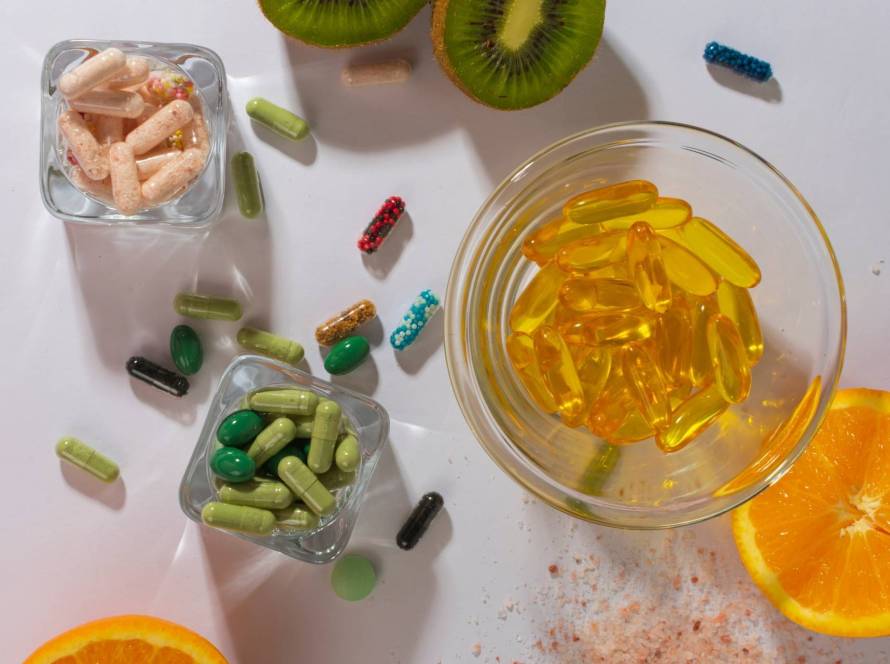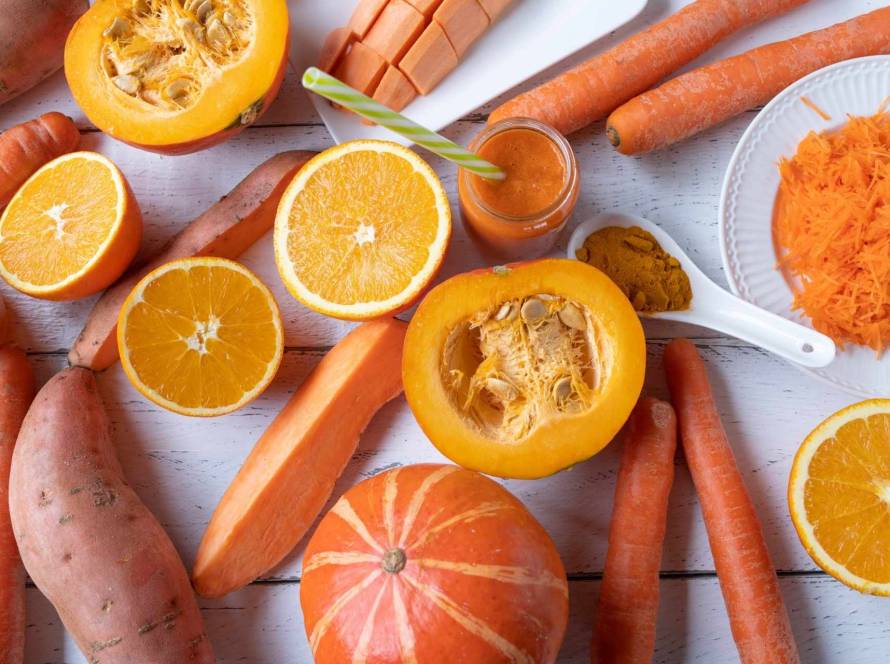Astaxanthin vs CoQ10, which one works better? Astaxanthin and CoQ10 have unique antioxidant properties. Both supplements help with cellular health.
This piece will look at how these powerful antioxidants work, their benefits and what science tells us about them. We will also explore whether astaxanthin is better than CoQ10 or whether taking astaxanthin and CoQ10 together may produce better results for people who want to live longer, healthier lives.
Which is more effective for health: astaxanthin or Coq10?
Astaxanthin and Coq10 are both powerful antioxidants, but they work in different ways. Astaxanthin is known for its exceptional ability to reduce oxidative stress and inflammation, especially in the skin, eyes and muscles. Coq10, on the other hand, plays a critical role in mitochondrial energy production and heart function.
While astaxanthin may be more effective for skin protection and anti-inflammatory support, coq10 is better suited for boosting energy and cardiovascular health. Rather than one being better than the other, they often work best together, offering complementary benefits for healthy aging.
What is astaxanthin and how does it work?
Astaxanthin is one of nature’s most powerful antioxidants and belongs to the xanthophyll carotenoid group. This remarkable compound has got a lot of attention in scientific research because it knows how to curb oxidative stress.
Natural sources and chemical structure
Haematococcus pluvialis, a microalga, serves as the main natural source of astaxanthin and can accumulate this pigment up to 3.8% of its dry weight. Marine animals like salmon, trout, shrimp and crab that eat these microorganisms are also natural sources, along with microorganisms such as Chlorella zofingiensis and Phaffia rhodozyma (yeast).
The structure of astaxanthin features two terminal rings connected by a polyene chain with 13 conjugated double bonds. Astaxanthin’s unique feature among carotenoids comes from hydroxyl and keto groups on each end of the molecule. This special chemical arrangement creates its reddish orange color and enhances its antioxidant capabilities.
How it neutralizes free radicals
Astaxanthin’s exceptional antioxidant power comes from neutralizing reactive oxygen species (ROS) and reactive nitrogen species (RNS) through multiple mechanisms. The molecule donates electrons, creates chemical bonds with reactive species and absorbs free radicals into its polyene chain.
The molecule’s unique structure lets it stretch across cell membranes. Its polar groups overlap the membrane’s polar regions while its central non-polar region fits inside the membrane’s inner non-polar layer. This arrangement across membranes helps astaxanthin protect cells from oxidative damage both inside and outside.
Research shows astaxanthin is 6000 times more powerful than vitamin C. It works 770 times better than CoQ10 and proves 100 times more effective than vitamin E to trap energy from singlet oxygen.
Tissue distribution and bioavailability
Astaxanthin’s absorption improves by a lot if we take it with dietary oils since it dissolves in fat. After we eat it, astaxanthin moves into intestinal epithelium through passive diffusion. Our liver receives it next and sends it throughout our body via lipoproteins.
Studies reveal natural astaxanthin reaches its highest concentration in plasma about 8 hours after consumption. Our body absorbs it better if we take it after meals instead of before.
What is CoQ10 and how does it function?
CoQ10 acts as a key lipid soluble molecule that exists in every cell membrane of the human body. This compound serves two vital roles: it carries electrons for cellular energy production and protects cells from oxidative damage as an antioxidant.
Role in mitochondrial energy production
CoQ10 stands as a core component in the mitochondrial electron transport chain, where it shuttles electrons from complexes I and II to complex III. This electron transfer creates a proton gradient across the inner mitochondrial membrane that produces adenosine triphosphate (ATP), the cell’s main energy source.
CoQ10 takes part in many biochemical pathways. It helps pyrimidine synthesis, fatty acid β-oxidation and sulfide detoxification by accepting electrons from different dehydrogenases. The molecule stabilizes respiratory complexes and builds supercomplexes, structures that improve electron transfer and lower reactive oxygen species production.
Forms: ubiquinone vs ubiquinol
CoQ10 comes in three oxidation states: fully oxidized (ubiquinone), partially reduced (ubisemiquinone) and fully reduced (ubiquinol). Ubiquinone and ubiquinol create a redox pair that switches between forms as they move electrons in cellular reactions.
Ubiquinol makes up about 95% of CoQ10 in human circulation and both forms change during metabolism. The body must convert ubiquinone to ubiquinol after absorption in the small intestine. Research shows that ubiquinol supplements might raise plasma CoQ10 levels better than ubiquinone in older adults.
Age related decline and supplementation
The body’s CoQ10 levels peak around age 20 and drop afterward. This decrease happens in many tissues and could lead to age related diseases. Studies show that heart muscle’s CoQ10 levels, to name just one example, fall by half by age 80.
We can find CoQ10 in meat, fish and nuts. Supplements can boost CoQ10 levels, especially in plasma and liver. Studies usually recommend 100-300 mg daily for therapeutic effects, with blood levels above 2.5 μg/mL showing effectiveness. The body tolerates higher doses up to 1200 mg daily well, according to research.
Comparing the benefits: astaxanthin vs CoQ10
These powerful antioxidants show clear differences when compared side by side. Each one brings its own benefits to our body’s systems through different mechanisms and levels of effectiveness.
Antioxidant strength and cellular protection
The difference in antioxidant power between these compounds is remarkable. Research shows astaxanthin is approximately 770 times more active than CoQ10 at neutralizing free radicals. The numbers are even more impressive, astaxanthin is 6000 times stronger than vitamin C and 100 times more effective than vitamin E at trapping singlet oxygen, a common reactive oxygen species in our body.
Astaxanthin’s unique electron-donating ability lets it eliminate free radicals that exercise and aerobic metabolism produce in muscles. All the same, CoQ10 plays its own vital role in protecting cells through mitochondrial energy production.
Heart and cardiovascular health
Both supplements show substantial heart benefits. A 24-week clinical trial with 101 participants showed CoQ10 supplements (120 mg daily) helped maintain healthy blood pressure and improved lipid markers like triglycerides and LDL cholesterol. The participants also showed boosted total antioxidant capacity.
Skin and UV protection
Astaxanthin shows impressive protective abilities for skin health. Studies reveal that astaxanthin supplements substantially reduce UV-related skin damage while helping retain skin moisture compared to placebo. Research found that just 4 mg of astaxanthin daily for four weeks renewed skin by reducing lipid oxidation and corneocyte desquamation.
CoQ10 supports skin health too, mainly through its antioxidant effects in skin cells. Research suggests astaxanthin might have stronger protective effects against UV-induced aging.
Brain and cognitive support
Our brain can benefit from both compounds. Astaxanthin passes through the blood brain barrier and protects against ischemia-related damage while reducing brain cell death. A 12-week human trial with people taking 12 mg of astaxanthin daily suggested it might protect against age related cognitive decline.
Exercise recovery and muscle health
Athletes and active people can benefit from both supplements. Male cyclists taking astaxanthin improved their cycling time compared to placebo. Young men taking astaxanthin increased their strength and endurance almost three times faster than the control group.
CoQ10 shows a positive link between exercise capacity and its levels in active males’ thigh muscles. Sedentary men who took supplements performed better during repeated exercise sessions. Ubiquinol supplements also helped firefighters maintain healthy inflammatory responses to intense exercise.
Can astaxanthin and CoQ10 be taken together?
People who take supplements often ask about mixing these powerful antioxidants. Astaxanthin and CoQ10 can work better together than separately.
Astaxanthin and CoQ10 make a strong case for working together because they act differently in the body. CoQ10 works inside the mitochondria and supports energy production that cells need. Astaxanthin spreads throughout cell membranes to provide complete protection against oxidative damage. Their difference suggests they create multiple layers of defense rather than overlapping benefits.
Astaxanthin protects cell membranes by fighting free radicals in mitochondrial membranes. This helps keep mitochondria working properly. CoQ10, particularly its ubiquinol form, plays a vital role in producing energy within these same mitochondria.
Whatever supplements we choose, both compounds deserve their status as powerful longevity supporting antioxidants. Their unique ways of working show why simple comparisons don’t capture the complex roles different antioxidants play in supporting cellular health and longevity.


